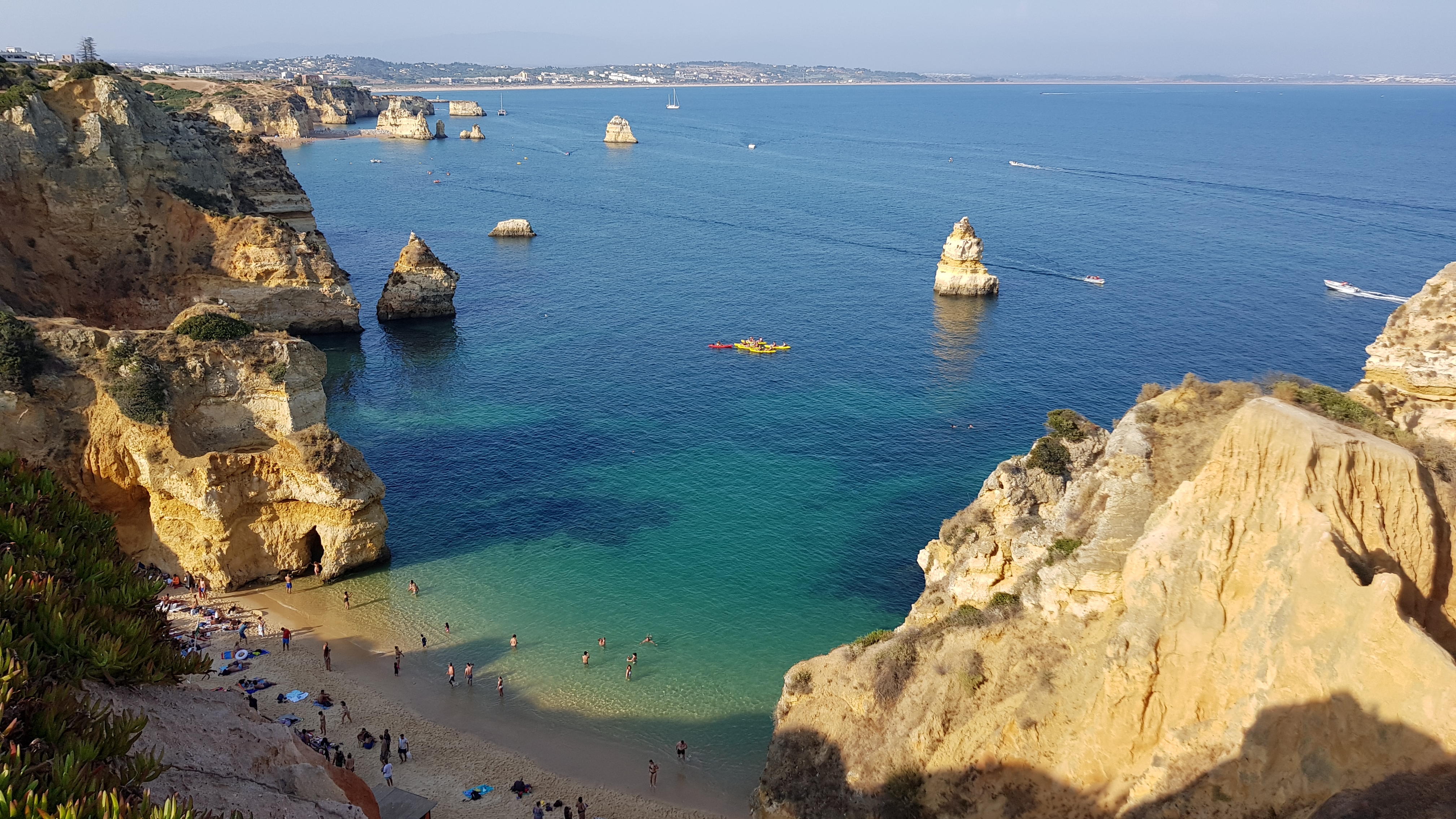Looking for unique places to visit in Portugal? Check out our list of unusual things to do in Portugal – famous & quirky places for your next holiday in Portugal.
Visiting Portugal can be a great experience, as the country has much to offer visitors, including historic cities, beautiful beaches, delicious food and wine, and friendly people.
When planning your trip to Portugal, consider the following:
- Visa requirements: Citizens of most countries do not need a visa to enter Portugal for stays of up to 90 days. However, it’s always best to check the visa requirements for your specific country before you travel.
- Accommodation: Portugal has a wide range of accommodation options, from budget-friendly hostels and apartments to luxury hotels. It’s recommended to book in advance, especially during peak season.
- Transportation: Portugal has an efficient and affordable public transportation system, including trains, buses, and metro. Taxis and ridesharing services are also widely available.
- Weather: Portugal has a Mediterranean climate with mild winters and warm summers, and the weather can vary depending on the region and time of year. It’s recommended to check the forecast and pack accordingly.
- Currency: Portugal’s currency is the Euro. It’s recommended to have cash and a credit or debit card with you, as not all places accept card payments.
- Safety: Portugal is a safe country to visit, but it’s always best to take precautions and be aware of your surroundings.
- Language: Portuguese is the official language of Portugal, but many people also speak English, especially in tourist areas.
By considering these factors and planning ahead, you can ensure that your trip to Portugal is a smooth and enjoyable experience.
Visiting Portugal – car hire
We have rented cars many times during holidays in Portugal and we always used discovercars.com
Check out our guide to the best car hire company in Portugal or simply explore the options directly on discovercars.com if you need a car during your next holiday in Portugal.
What part of Portugal should I visit?
There are many beautiful and interesting places to visit in Portugal, but it depends on your interests. Some popular destinations include:
- Lisbon, the capital city known for its historic architecture, vibrant nightlife, and delicious seafood.
- Porto, a charming city located in the northwest of the country known for its port wine and picturesque city center.
- The Algarve, a region in the south known for its stunning beaches and picturesque coastline.
- The Azores, an archipelago in the Atlantic Ocean known for its stunning natural beauty, including volcanic landscapes and hot springs.
- The Douro Valley, a region in the northeast known for its vineyards and picturesque landscapes.
- Sintra, a town located near Lisbon known for its palaces and castles, including the Pena Palace.
It’s worth considering when you plan to visit, as some places may have different weather conditions and peak seasons.
Most beautiful place in Portugal
1. Praia da Marinha
Praia da Marinha is a beach located in the Algarve region of Portugal. It is known for its clear waters, natural rock formations, and cliffs.
The beach is considered one of the most beautiful in Portugal, and is a popular spot for swimming, sunbathing, and hiking. It is located near the town of Lagoa, which is known for its historic castle, and the Ria Formosa Natural Park.
2. Sintra
Sintra is a town located in the Sintra Mountains, near Lisbon, Portugal. It is known for its stunning palaces, castles, and historic buildings, such as the Pena Palace, the Castle of the Moors, and the Palace of Sintra. The town has a rich history, and many of its buildings are architectural examples of the Romanticism movement, which was popular in the 19th century. Sintra is a UNESCO World Heritage site and it’s a popular tourist destination, known for its beautiful gardens, scenic views, and cultural heritage.
Visitors can also find several museums, parks and the National Palace of Sintra. Sintra is a popular day trip destination from Lisbon, but also many visitors choose to stay overnight to fully enjoy and explore Sintra.
3. Lisbon
Lisbon is the capital and largest city of Portugal. It is located on the Atlantic coast of the country and is known for its historic sites, monuments, and cultural landmarks. Some of the most famous landmarks in Lisbon include the Belem Tower, Jeronimos Monastery, and the Sao Jorge Castle. The city also has a vibrant nightlife and is known for its Fado music, a traditional style of singing that originated in Lisbon.
If you are looking for ideas for long weekend Europe breaks Lisbon is a great option!
Lisbon has a rich history, and visitors can find many examples of traditional Portuguese architecture throughout the city, including the traditional neighborhood of Alfama and the Baixa neighborhood, which is known for its 18th-century architecture and the Rossio square. Lisbon is also a great place for gastronomy, visitors can find a variety of traditional Portuguese dishes and seafood. The city is also known for its street art and there are many murals and graffiti throughout the city.
4. Benagil Cave
Benagil Cave is a sea cave located in the Algarve region of Portugal. It is located near the village of Benagil and is known for its unique, natural dome-shaped opening that allows sunlight to flood into the cave.
The cave can be accessed by boat, and it is a popular spot for swimming, sunbathing, and exploring. The cave is considered a natural wonder and is a popular tourist destination in Algarve. It is surrounded by beautiful beaches and cliffs, making it a great place for photography and sightseeing.
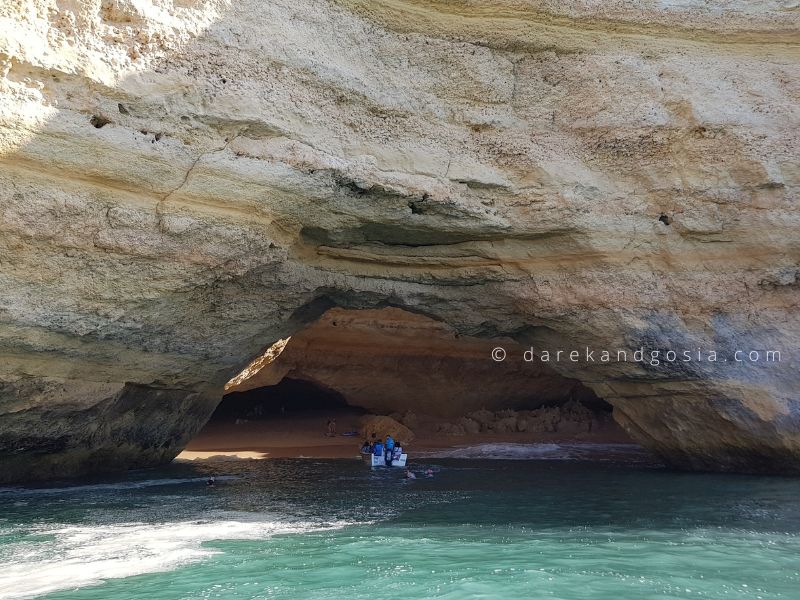
5. Cabo Girão Skywalk
Cabo Girão Skywalk is a glass platform located on the island of Madeira, Portugal. It is situated on the edge of a 580-meter high cliff, offering a stunning view of the Atlantic Ocean and the neighboring island of Deserta. The skywalk is considered to be one of the highest in Europe, and it provides visitors with a unique and exhilarating experience.
The platform is built with a transparent glass floor, which allows visitors to look straight down at the ocean below. Visitors can also take a lift to the top of the cliff, and enjoy the panoramic views of the island and the ocean. The skywalk is a popular tourist destination in Madeira and it’s a great place for photography and sightseeing.
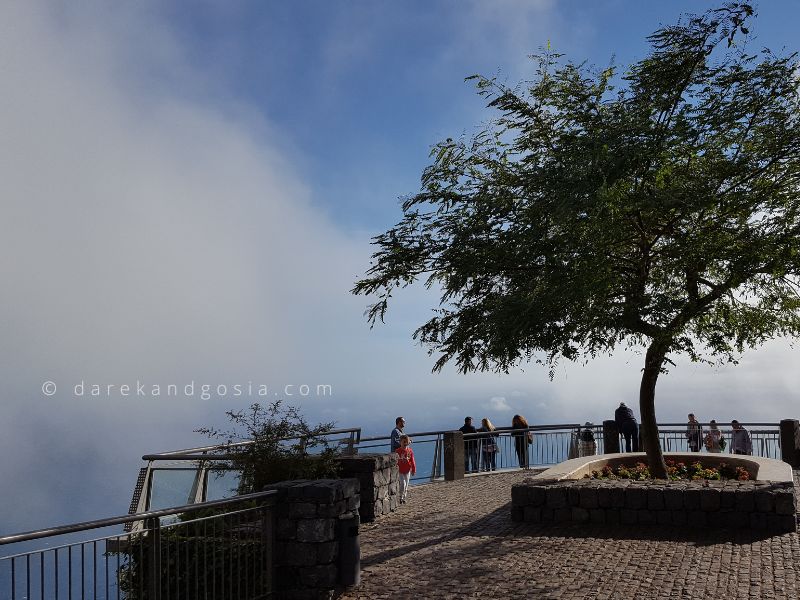
6. Porto
Porto is a city located in northwest Portugal and is the second-largest city in the country. It is known for its historic center, which is a UNESCO World Heritage Site, and for being the birthplace of port wine.
The city has a beautiful historic center with narrow cobblestone streets, traditional houses and historic monuments such as the Clérigos Tower, São Francisco Church, and the Palácio da Bolsa. Porto is also known for its lively atmosphere, with a variety of bars, restaurants and nightlife. The city has a strong cultural identity and visitors can find a variety of museums, art galleries, and cultural centers throughout the city.
The Douro river runs through the city, which offers great opportunity for boat trips, and the Ribeira neighborhood, located by the river, is one of the most picturesque areas in the city. Visitors can also find several parks, gardens and green spaces in the city, such as the Crystal Palace gardens and the city’s botanical garden.
7. Zoomarine Algarve
Zoomarine Algarve is a marine-life and entertainment park located in the Algarve region of Portugal. The park features a variety of shows and exhibits, including dolphin and sea lion shows, bird of prey shows, and a tropical bird exhibit. It also has several aquariums and terrariums, showcasing a wide range of marine life such as sharks, rays, and tropical fish. The park also has a wide range of activities for visitors of all ages, such as swimming with dolphins, a sea lion encounter, a playground, and a water park.
The park is also known for its environmental and conservation education programs, and is dedicated to raising awareness about the importance of marine life conservation and the impact of human activities on the ocean. Zoomarine Algarve is a popular tourist destination, and it’s a great place to visit for families, and those who love marine life and animals.
8. Belém
Belém is a neighborhood located in the western part of Lisbon, Portugal. It is known for its rich history and cultural landmarks, including the Jerónimos Monastery and the Tower of Belém, both of which are UNESCO World Heritage sites. The Jerónimos Monastery is a late Gothic-style architectural masterpiece and a symbol of Portugal’s Age of Discovery and the Tower of Belém is a fortified tower built in the early 16th century to guard the entrance of Lisbon’s harbor.
The area is also known for its delicious pastries, specifically the famous “Pasteis de Belem” which is a traditional sweet pastry filled with custard cream, originating from the Convent of Belém.
9. Cabo de San Vicente
Cabo de São Vicente, also known as Cape St. Vincent, is a headland located in the Algarve Portugal. It is the southwesternmost point of continental Europe, and it’s known for its rugged cliffs, strong winds, and powerful waves. The cape is an important site for birdwatching, as it is home to a variety of migratory birds. The cape also has a lighthouse, which is one of the oldest in Portugal, and it’s open to visitors.
The cape is also an important site for religious pilgrimage, as it has a chapel dedicated to Saint Vincent, the patron saint of Lisbon. The cape is a popular spot for hiking, and visitors can take a walk along the cliffs and enjoy the beautiful views of the Atlantic Ocean. The cape is also a great place for photography and sightseeing, and it’s known for its stunning sunsets. The cape is a great place for visitors who enjoy nature and outdoor activities, it is also a popular spot for surfers due to its strong waves.
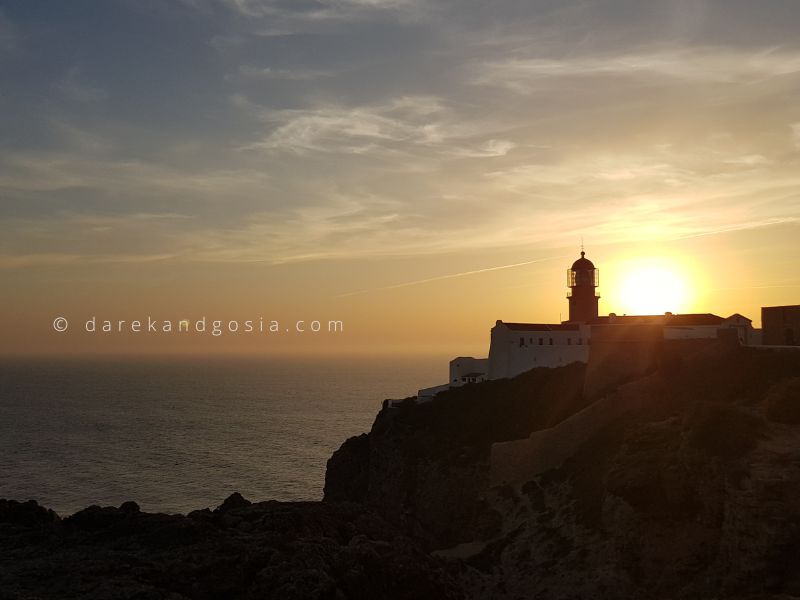
10. Ericeira
Ericeira is a small coastal town located in the Mafra municipality, in the Lisbon region of Portugal. It is known for its picturesque streets, historic buildings, and beautiful beaches. The town is considered one of the most popular surf destinations in Europe, and it’s home to several world-class surf spots, including Ribeira d’Ilhas, a beach that has hosted several World Surfing Championship events.
Ericeira is a charming and vibrant town, with a strong fishing tradition and visitors can find a variety of seafood restaurants and traditional fish markets in the town. The town also has a rich cultural heritage, and visitors can find several museums, art galleries, and cultural centers in the town. The town also has a lively nightlife, with a variety of bars, clubs and live music venues. Ericeira is also a great place for hiking, and visitors can take a walk along the cliffs and enjoy the beautiful views of the Atlantic Ocean.
Ericeira is a perfect destination for those who enjoy outdoor activities such as surfing, hiking and also for those who appreciate the traditional culture, food and the beach.
11. The Azores
The Azores is an archipelago of nine volcanic islands located in the Atlantic Ocean, and it is an autonomous region of Portugal. The islands are known for their stunning natural beauty, with lush green landscapes, volcanic lakes and craters, hot springs, and waterfalls. The Azores is a popular destination for outdoor activities such as hiking, climbing, and birdwatching.
The islands are also known for their rich marine life, and visitors can find a variety of marine mammals, such as dolphins and whales, and many species of fish and birds. The Azores is also a great destination for diving and snorkeling, due to its clear waters and rich marine life.
The Azores is a great place for those who appreciate natural beauty, outdoor activities and also for those who want to experience the traditional culture of the islands. Visitors can also find many historic sites, such as the 16th-century Fort of São Brás in Angra do Heroismo, and traditional festivals, such as the Festival of the Holy Spirit, which is celebrated on all islands. The Azores has also a rich gastronomy, and visitors can find a variety of traditional dishes, such as Cozido das Furnas, a stew cooked in volcanic hot springs.
12. Praia do Camilo
Praia do Camilo is a beach located in the Algarve region of Portugal, near the town of Lagos. The beach is known for its clear waters, and its natural rock formations, and cliffs. Praia do Camilo is considered one of the most beautiful beaches in the Algarve, and it’s a popular spot for swimming, sunbathing, and hiking. The beach is accessible by a set of stairs carved into the rock and is considered one of the most photographed beaches in the region.
Praia do Camilo is surrounded by beautiful cliffs, that provide a stunning backdrop to the beach and it’s also a great spot for photography. The beach also has a variety of restaurants and cafes, and it’s a great place to enjoy a seafood meal while watching the sunset.
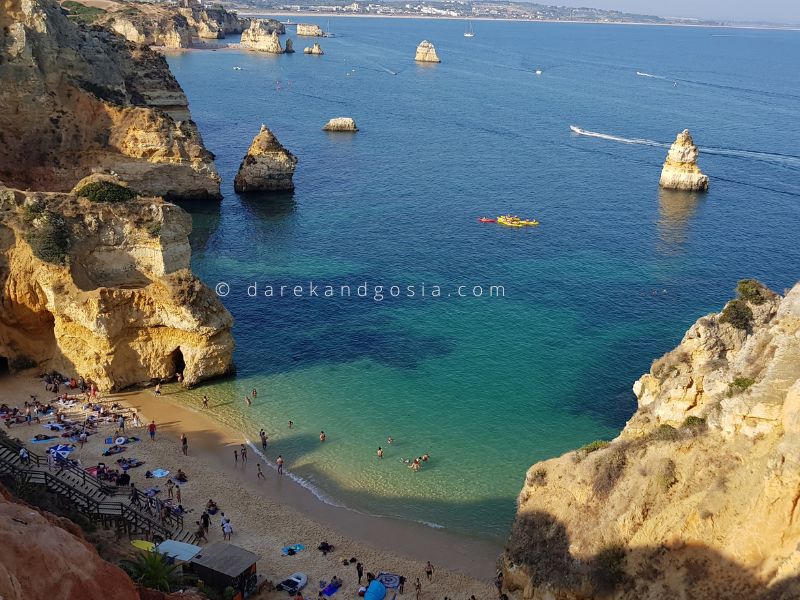
13. Évora
Évora is a historic city located in the Alentejo region of Portugal. It is known for its well-preserved medieval architecture, including a Roman Temple, Gothic Cathedral and a well-preserved city walls. It is also home to the University of Évora, which was founded in the 16th century.
One of the most famous landmarks in Évora is the Chapel of Bones (Capela dos Ossos), which is located inside the Church of St. Francis. The chapel is decorated with the bones of over 5,000 people, and it serves as a reminder of the fragility of life.
Évora is also known for its traditional markets, where visitors can find a variety of local products such as ceramics, textiles, and wines. The city is also famous for its traditional music, such as Fado and the traditional dance “Dança Alentejana”.
Évora is a UNESCO World Heritage Site and it’s a popular tourist destination for those who appreciate history, culture, and architecture. The city is also known for its excellent gastronomy, with a variety of traditional dishes such as “Migas” and “Cozido à portuguesa”.
14. Nazare
Nazaré is a seaside town located in the Silver Coast region of Portugal, known for its long sandy beach and its strong waves, which make it one of the most popular spots for big-wave surfing. The beach is considered to be one of the best places in the world for surfing, and it’s home to the Nazaré Challenge, an annual surf competition that attracts some of the world’s best big-wave surfers.
The town also has a rich cultural and religious heritage, and visitors can find several historic churches and chapels, such as the Church of Nossa Senhora da Nazaré, which is considered to be one of the most important religious sites in the region. The town is also famous for its traditional festivals, such as the “Festa da Nazaré”, which is celebrated in September and it’s one of the most important religious festivals in the region.
Nazaré has a charming old town with narrow streets, traditional houses and small squares, with a variety of seafood restaurants where visitors can taste the traditional dishes of the region.
Nazaré is a popular tourist destination and it’s a great place to visit for those who love the beach, outdoor activities and also for those who appreciate the traditional culture and the religious heritage of the region.
15. Praia da Amoriera
Praia da Amoreira is a beach located in the Algarve region of Portugal, near the town of Aljezur. The beach is known for its natural beauty, clear waters, and its long stretch of white sandy beach. It is considered a hidden gem in the Algarve, and is a popular spot for swimming, sunbathing, and surfing. The beach is surrounded by cliffs and dunes, and it’s a great place for hiking and exploring.
Praia da Amoreira is also a great spot for birdwatching, as it is home to a variety of migratory birds. The beach is also known for its stunning sunsets, and it’s a great place for photography. The beach is located close to the Amoreira River, which provides a unique natural environment and visitors can also find a variety of traditional seafood restaurants in the area.
Praia da Amoreira is a popular beach destination in Algarve for those who love outdoor activities and also for those who appreciate the natural beauty of the region. Visitors should be aware that the beach can get quite busy during the peak season and there is a limited number of parking spots available.
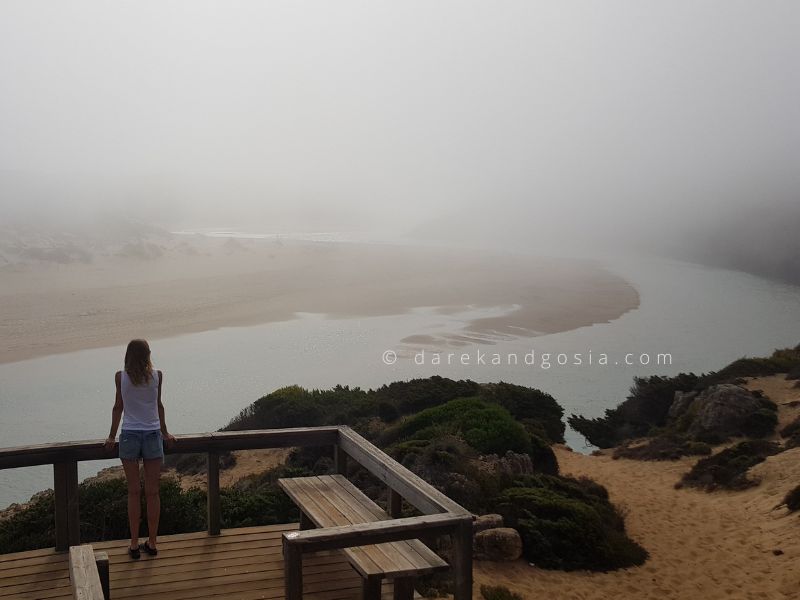
16. Coimbra
Coimbra is a city located in central Portugal. It is known for its historic university, the University of Coimbra, which is one of the oldest in Europe and a UNESCO World Heritage site. The university’s Baroque library, the Biblioteca Joanina, is one of the city’s most famous landmarks. The city also has a well-preserved old town, with narrow streets, traditional houses, and several historic monuments such as the Monastery of Santa Clara-a-Nova and the Sé Velha (Old Cathedral).
Coimbra is also known for its lively student culture and vibrant nightlife, and it’s a great place to experience Portuguese music and traditional songs, such as the “Coimbra Fado”. The city is also famous for its traditional festivals, such as the Queima das Fitas, which is celebrated in May and it’s one of the most important student festivals in the country.
Coimbra is a great destination for those who appreciate history, culture and education. Visitors can also find a variety of museums, art galleries and cultural centers in the city, as well as traditional markets and shops, where visitors can find a variety of local products such as ceramics, textiles and traditional sweets.
17. Pico Ruivo
Pico Ruivo is the highest peak on the island of Madeira, Portugal, with a height of 1,862 meters (6,109 feet). It is located in the central mountain range of the island, known as the Serra de Água. The peak is accessible via a hiking trail, which starts from the town of Achada do Teixeira and takes around 4-5 hours to reach the summit. The hike is considered challenging due to the steep incline and rocky terrain, but it offers spectacular views of the island and the surrounding ocean.
The summit of Pico Ruivo is a popular destination for hikers and nature enthusiasts, and it’s also a great place for birdwatching, as it is home to a variety of endemic bird species. Visitors can also find a shelter and a viewpoint at the summit, where they can rest and admire the views. The peak is also considered a sacred site by the locals, and it has a small chapel dedicated to Nossa Senhora do Monte, the patron saint of the island.
18. Albufeira
Albufeira is a town located in the Algarve, known for its long sandy beaches, lively nightlife, and historic old town. The town is a popular tourist destination, and it’s known for its beautiful beaches such as Praia do Peneco, Praia dos Pescadores and Praia da Oura. The town also has a lively nightlife, with a variety of bars, clubs, and restaurants, and it’s a popular destination for party-goers and young travelers.
The town also has a historic old town, known as the “Old Town” or “The Strip” where visitors can find traditional houses, narrow streets, and historic monuments such as the Castle of Paderne and the Church of Nossa Senhora da Orada. The town also has a marina, where visitors can find a variety of boats and water activities like boat trips, fishing trips and jet ski rental.
19. Douro Valley
The Douro Valley is a region located in the northeastern part of Portugal, known for its stunning landscapes, historic wine-making traditions and picturesque villages. The region is a UNESCO World Heritage site, and it’s famous for its terraced vineyards, which are carved into the steep hillsides along the Douro River. The region is known for its production of Port wine and table wines, and visitors can find a variety of wineries and vineyards offering tours and tastings.
The Douro Valley is also known for its stunning natural beauty, with a variety of hiking trails and scenic drives offering views of the river and the vineyards. Visitors can also find a variety of historic villages and towns in the region, such as Pinhão and Lamego, which offer a glimpse into the region’s traditional way of life.
20. Braga
Braga is a city located in the northwest of Portugal, known for its rich history, religious heritage, and cultural landmarks. The city is one of the oldest in Portugal, and it has a well-preserved historic center, with a variety of historic monuments and buildings such as the Cathedral of Braga, the Palace of the Raio and the Bom Jesus do Monte sanctuary. The city is also known for its religious heritage and is considered one of the most important Catholic pilgrimage sites in Portugal.
Braga is also known for its vibrant cultural scene, and visitors can find a variety of museums, art galleries, and cultural centers in the city. The city also has a lively nightlife, with a variety of bars, clubs, and live music venues.
21. Ribeira da Janela
Ribeira da Janela is a small village located in the Calheta municipality, on the island of Madeira in Portugal. The village is known for its picturesque setting, nestled between the cliffs and the Atlantic Ocean, and for its beautiful natural landscapes. It’s a great place for outdoor activities such as hiking, birdwatching, and swimming in the crystal-clear waters of the Atlantic.
The village is also known for its traditional architecture, and visitors can find a variety of traditional houses and structures made from local materials such as stone and wood. The village is also home to a small church, the Nossa Senhora da Conceição, which is considered an important religious site in the region.
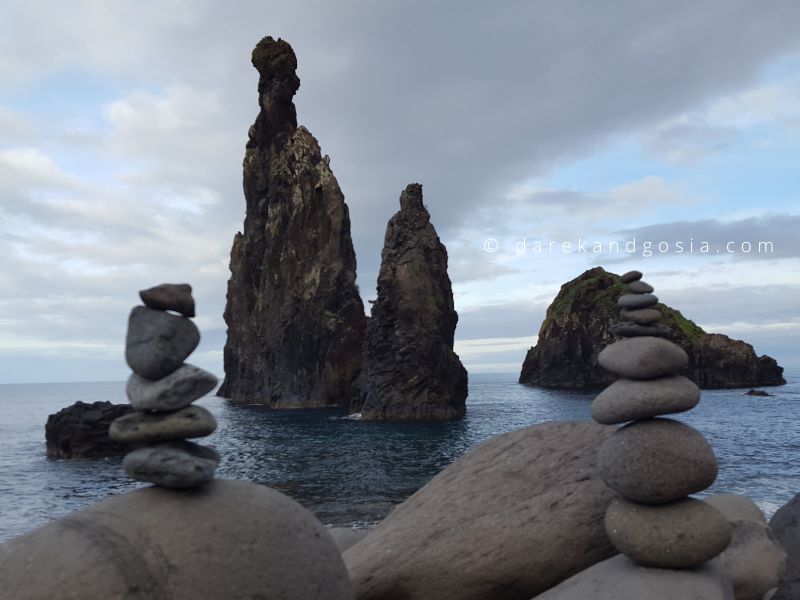
22. Aveiro
Aveiro is a city located in the central region of Portugal, known for its picturesque canals, colorful boats, and historic center. The city is often referred to as the “Venice of Portugal” due to its network of canals, which are lined with colorful boats known as “moliceiros”, and visitors can take a boat tour to explore the city.
The city has a rich cultural heritage, and visitors can find a variety of museums and art galleries in the city, including the Museum of Aveiro and the Maria Luisa and Homem Cristo Museum. The city also has a lively student population and a vibrant nightlife, with a variety of bars, clubs, and live music venues.
Aveiro is also known for its traditional crafts, such as the production of ceramics and glassware, and visitors can find a variety of shops and markets in the city where they can purchase these and other local products.
23. Algar Seco
Algar Seco is a coastal area located in the Algarve region, known for its natural rock formations and crystal-clear waters. The area is located near the town of Carvoeiro and is a popular spot for swimming, sunbathing, and exploring the natural rock formations. Visitors can also find a variety of hiking trails in the area, which offer spectacular views of the coast and the surrounding cliffs.
Algar Seco is also known for its marine life, and visitors can find a variety of marine mammals and fish species in the area. The area is also a popular spot for snorkeling and diving, due to its clear waters and rich marine life.
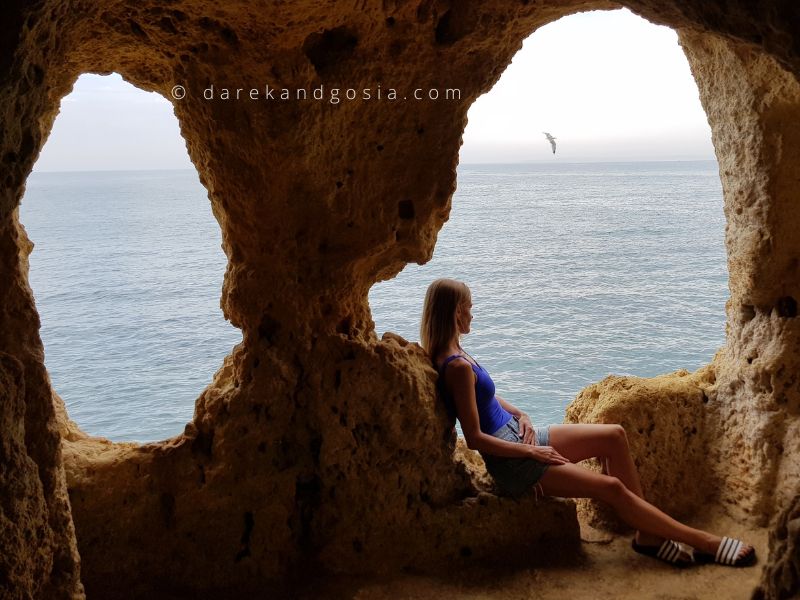
24. Funchal
Funchal is the capital and largest city on the island of Madeira. It is known for its mild climate, beautiful landscapes, and cultural heritage. The city is located on the southern coast of the island and is a popular tourist destination.
Funchal is known for its historic center, which features a variety of traditional houses, narrow streets, and historic monuments such as the Cathedral of Funchal and the São Lourenço Palace. The city is also famous for its gardens, such as the Quinta das Cruzes Museum and the Monte Palace Tropical Garden.
25. Óbidos
Óbidos is a historic town located in the central region of Portugal, known for its well-preserved medieval architecture and its picturesque setting. The town is situated on a hilltop and is surrounded by medieval walls, making it one of the best-preserved medieval towns in the country. The town is also known for its narrow streets, traditional houses, and historic monuments such as the Castle of Óbidos and the Church of Santa Maria.
The town is also famous for its traditional festivals, such as the Medieval Fair, which is celebrated in July and August, and it’s one of the most important cultural events in the region. Óbidos is also known for its traditional pottery and visitors can find a variety of shops and markets where they can purchase traditional ceramics and other local products.
26. Ponta de São Lourenço
Ponta de São Lourenço is a coastal area located in the easternmost point of the island of Madeira, Portugal. It is known for its rugged landscapes, clear waters, and diverse wildlife. The area is a natural reserve and it’s a popular spot for hiking, birdwatching, and swimming. Visitors can also find a variety of hiking trails in the area, which offer spectacular views of the coast and the surrounding cliffs.
The area is also known for its marine life, and visitors can find a variety of marine mammals and fish species in the area. The area is also a popular spot for snorkeling and diving, due to its clear waters and rich marine life. Visitors can also find a variety of traditional seafood restaurants in the area, where they can taste the traditional dishes of the region.
27. Monsanto
Monsanto is a small village located in the central region of Portugal, known for its unique architecture and rich history. The village is known for its traditional houses built on top of large granite boulders, which are unique to the area. The village is also known for its historic castle, which dates back to the 12th century, and it’s one of the main landmarks of the village.
Monsanto is also known for its natural beauty, with a variety of hiking trails and scenic drives offering views of the surrounding countryside. Visitors can also find a variety of traditional restaurants and taverns in the village, where they can taste the traditional dishes of the region and enjoy the beautiful views.
The village is also known for its strong sense of community and traditional festivals, such as the Festival of Saint John, which is celebrated every year in June.
28. Parque Natural da Serra da Estrela
The Serra da Estrela Natural Park is a protected area located in the Serra da Estrela mountain range in central Portugal. It is the largest and highest mountain range in mainland Portugal, with its highest point being the Torre peak at 1,993 meters (6,539 feet). The park is known for its stunning landscapes, diverse wildlife, and recreational activities such as hiking, skiing, and mountaineering.
The park is home to a variety of plant and animal life, including the Iberian wolf, the wildcat, and the golden eagle, as well as a variety of endemic plants. The park also offers a variety of hiking trails, including the one to the Torre peak, which is considered challenging but offers spectacular views of the surrounding mountains and valleys.
29. Sagres
Sagres is a town located in the southwestern part of Portugal, known for its rugged coastal landscapes, historic landmarks, and outdoor activities. The town is situated on the southwesternmost point of mainland Europe, and it’s known for its cliffs, beaches, and powerful Atlantic Ocean.
Sagres is known for its historic landmarks, such as the Fort of Sagres, a 16th-century fortification built by Prince Henry the Navigator. The fort played a key role in the Age of Discovery and the town is also known for its lighthouse, the Cape of Saint Vincent Lighthouse, the most south-western point of Europe.
30. Santana
Santana is a small village located on the island of Madeira, known for its traditional thatched-roof houses and its beautiful natural landscapes. The village is situated in the north of the island and is surrounded by a variety of hiking trails, which offer spectacular views of the surrounding mountains and valleys.
Santana is known for its traditional thatched-roof houses, which are considered a unique feature of the village and a symbol of the region’s traditional architecture. Visitors can also find a variety of traditional restaurants and taverns in the village, where they can taste the traditional dishes of the region and enjoy the beautiful views.
31. Fatima
Fátima is a small town located in the central region of Portugal, known for its religious significance and beautiful architecture. The town is one of the most important Catholic pilgrimage sites in the world, as it is believed that the Virgin Mary appeared to three children in the town in 1917. The apparitions are commemorated by the Sanctuary of Fátima, which consists of the Chapel of Apparitions, the Basilica of Our Lady of the Rosary, and the Church of the Most Holy Trinity.
Fátima is also known for its beautiful architecture, with a variety of historic churches and monuments such as the Fátima Basilica, the Chapel of the Apparitions, and the Capelinha das Aparições, which is a small chapel where the Virgin Mary is said to have appeared to the three children. Visitors can also find a variety of museums and art galleries in the town, such as the Museum of Sacred Art and the Museum of the Rosary.
32. Setúbal Peninsula
The Setúbal Peninsula is a coastal region located in the central part of Portugal, known for its beautiful beaches, natural landscapes, and rich history. The peninsula is located to the south of the city of Setúbal and is a popular tourist destination.
The peninsula is known for its beautiful beaches, such as Troia, Sesimbra, and Portinho da Arrábida, which are popular spots for swimming, sunbathing, and water sports. The peninsula is also known for its natural landscapes, such as the Arrábida Natural Park, which is a protected area known for its diverse plant and animal life, as well as its scenic hiking trails.
33. Cabo da Roca
Cabo da Roca is a headland located in the westernmost point of mainland Europe, in the Sintra-Cascais Natural Park, Portugal. The area is known for its natural beauty, rugged coastline, and historic landmarks. The cape is a popular tourist destination and the spot is a popular spot for visitors to take in the views of the Atlantic Ocean and the cliffs.
Cabo da Roca is also known for its historic lighthouse, the Farol do Cabo da Roca, which dates back to the 17th century and is still in operation today. The lighthouse offers visitors a panoramic view of the surrounding landscape.
The area is also known for its excellent opportunities for outdoor activities such as hiking, birdwatching, and swimming in the crystal-clear waters of the Atlantic. Visitors can also find a variety of seafood restaurants in the area, where they can taste the traditional dishes of the region.
34. Cascais
Cascais is a coastal town located in the western region of Portugal, known for its beautiful beaches, historic landmarks, and lively atmosphere. The town is located just a short distance from the capital city of Lisbon and is a popular tourist destination.
Cascais is known for its beautiful beaches, such as Praia da Rainha, Praia da Duquesa, and Praia do Peixe, which are popular spots for swimming, sunbathing, and water sports. The town is also known for its historic landmarks, such as the Cascais Citadel, a 19th-century fortress that offers panoramic views of the town and the coast, and the Boca do Inferno, a spectacular rock formation.
35. Amarante
Amarante is a small town located in the northern region of Portugal, known for its rich history, cultural heritage and natural beauty. The town is located on the banks of the Tâmega River and is surrounded by beautiful countryside.
Amarante is known for its rich history and cultural heritage, with a variety of historic landmarks such as the São Gonçalo Church, an 18th-century baroque church, and the Convent of Nossa Senhora da Conceição, a 17th-century convent. Visitors can also find a variety of traditional crafts in the town, such as embroidery and pottery.
Where should I go for my first time in Portugal?
If it’s your first time in Portugal, Lisbon is a great place to start. As the capital and largest city of Portugal, it offers a great mix of history, culture, and entertainment. It is a great destination to explore, with its charming neighborhoods, historic monuments, and vibrant nightlife.
Some of the must-see attractions in Lisbon include:
- The Belem Tower and the Jeronimos Monastery, two of the city’s most famous monuments, both are UNESCO World Heritage sites.
- The historic neighborhoods of Alfama, Baixa, and Bairro Alto, each with their unique charm and character.
- The Elevador de Santa Justa, a historic lift that offers great views over the city.
- The Lisbon Oceanarium is one of the largest aquariums in Europe and is home to a wide variety of marine life.
- Lisbon’s famous trams are a great way to explore the city and get a feel for its character.
If you have time, you should also consider visiting some of the nearby towns and villages such as Sintra and Cascais, which are also popular tourist destinations.
Porto is also a great option for your first visit, being the second city of Portugal, it’s known for its beautiful historic center, port wine and the Douro river. The Ribeira neighborhood is a must-see, with its narrow streets, colorful buildings, and great restaurants and cafes. The Clerigos Tower and the Sao Bento railway station are also popular sights.
Both cities are well connected by train and you can easily visit both in a week.
How many days in Portugal is enough?
The amount of time you should spend in Portugal depends on your interests and priorities. A week is generally enough time to get a good sense of the country and visit some of its main attractions, but you may want to consider spending more time if you want to explore more thoroughly.
If you’re interested in visiting the major cities, such as Lisbon and Porto, and experiencing the country’s history, culture, and food, then a week is a good amount of time. You can also plan day trips to nearby towns such as Sintra, Cascais and Coimbra.
If you’re looking to experience the natural beauty of Portugal, you may want to consider spending more time. The country is home to many national parks and nature reserves, as well as beautiful beaches, and rugged coastal landscapes. The Azores and Madeira islands are also great options for nature lovers, but you will need more time to visit them.
If you’re looking to combine both and have a mix of city and nature, two weeks would be enough to cover both aspects. However, the more time you have, the more you will be able to explore and discover.
Best places to visit in Portugal with family
Portugal is a great destination for families, with a wide range of attractions and activities to enjoy together. Here are some popular places to visit in Portugal with family:
- Lisbon: The capital city of Portugal is known for its historic architecture, vibrant culture, and fun activities for families. Some popular family-friendly attractions include the Belem Tower, the Jeronimos Monastery, the Lisbon Oceanarium, and the Parque das Nações.
- Algarve: This region in the south of Portugal is known for its beautiful beaches, picturesque coastline, and fun activities for families. Some popular family-friendly activities include dolphin watching, boat trips, and water parks.
- The Azores: This archipelago in the Atlantic Ocean is known for its stunning natural beauty and outdoor activities. The islands of São Miguel and Terceira are popular with families for their hiking, swimming and snorkeling opportunities.
- Porto: The second city of Portugal, it’s known for its historic center, port wine and the Douro river. The Ribeira neighborhood is a must-see, with its narrow streets, colorful buildings, and great restaurants and cafes. The city also has a lively atmosphere and many family-friendly activities, such as the funicular ride to the top of the Clérigos Tower, and the interactive science center, the Serralves Museum.
- Obidos: This is a fortified town located in the Silver Coast region, known for its charming medieval atmosphere and its fortress walls. The town is home to many festivals and events, and it’s a great place to visit with children.
- Sesimbra: This is a town located south of Lisbon, known for its beautiful beaches, fishing village atmosphere and its castle. The town is also home to a marine reserve
What is the best month to travel to Portugal?
The best time to visit Portugal depends on what you want to see and do, as well as your personal preferences.
The summer months of June through August are the most popular time to visit Portugal, and with good reason. The weather is generally warm and sunny with the temperature averaging around 25-30 degree celsius, making it ideal for beach vacations, swimming and sunbathing. Also, many festivals and events happen during this time of the year.
However, it can also be the most crowded and expensive time to visit, especially in the popular tourist areas. If you are looking to avoid crowds and save money, consider visiting in the shoulder seasons of May and September. The weather is still pleasant and warm but it’s less crowded than the peak summer months.
The winter months of November to February can be cold and rainy, but it can also be a good time to visit if you’re looking for a quieter and less crowded trip. Also, some cities such as Lisbon and Porto are less affected by the cold weather, and it can be a great time to visit them.
It’s worth considering that Portugal is a small country and weather can vary greatly depending on the region. In the North, it’s usually cooler and rainier than in the South.
How to spend 7 days in Portugal?
There are many ways you can spend 7 days in Portugal. Here is just an example itinerary for spending 7 days in Portugal:
Day 1: Arrive in Lisbon and spend the day exploring the city’s historic center, including the Baixa neighborhood, the Belem Tower, and the Jeronimos Monastery.
Day 2: Take a day trip from Lisbon to the nearby town of Sintra to visit the Pena Palace and the Moorish Castle.
Day 3: Take a train to Porto and spend the day exploring the city’s historic center, including the Sao Bento railway station, the Clerigos Tower, and the Ribeira neighborhood.
Day 4: Take a day trip from Porto to the Douro Valley to visit a few of the region’s famous wineries and enjoy the stunning scenery.
Day 5: Take a train or bus to the Algarve and spend the day relaxing on one of the region’s beautiful beaches.
Day 6: Take a day trip from the Algarve to the nearby town of Lagos to visit the Lagos Marina, the Lagos Old Town, and the Lagos Fortress.
Day 7: Return to Lisbon for your last day in Portugal and spend the day doing some last-minute shopping or relaxing before departing.
This itinerary is just one possible way to spend 7 days in Portugal, and you can adjust it according to your preferences and interests. If you have more time, you may consider traveling to other parts of the country such as The Azores or Madeira island.
Where are the nicest beaches in Portugal?
Portugal is home to many beautiful beaches, and the nicest beaches will depend on your preferences. Some popular options include:
- Algarve: The Algarve region in the south of Portugal is known for its stunning beaches and picturesque coastline. Some of the most popular beaches in the Algarve include Praia da Rocha, Praia da Marinha, and Praia de Benagil.
- Costa Vicentina: This is a stretch of coastline in the Alentejo region, known for its rugged beauty, unspoiled beaches, and excellent surf spots. Some of the most popular beaches in the Costa Vicentina include Praia do Amado, Praia da Arrifana, and Praia do Tonel.
- Comporta: This area is located in the Alentejo region, and it’s known for its beautiful beaches and charming fishing villages. Some of the most popular beaches in the Comporta include Praia do Pego, Praia do Carvalhal, and Praia do Tróia.
- Madeira: The Madeira archipelago is an autonomous region of Portugal, located in the Atlantic Ocean. It’s known for its beautiful beaches, and some of the most popular ones are Calheta Beach and Machico Beach.
- Azores: The Azores is a group of volcanic islands located in the Atlantic Ocean, it’s known for its stunning natural beauty, and some of the most popular beaches include Praia da Vitoria Beach and Praia dos Biscoitos.
Portugal’s beaches can vary greatly depending on the season and weather conditions, and some beaches may be more crowded during the peak summer months. Also, consider the type of beach you are looking for, as some beaches are more suitable for swimming, sunbathing, and water sports, while others are more secluded and ideal for nature lovers.
What food is Portugal known for?
Portugal is known for its delicious and diverse cuisine, which is heavily influenced by its seafood, meat, and traditional recipes. Some of the most popular and traditional dishes include:
- Bacalhau: This is salted codfish and is considered the national dish of Portugal. It is prepared in many different ways, including Bacalhau à brás (shredded cod with potatoes and onions) and Bacalhau com natas (cod with cream).
- Cozido: A hearty stew made with meat, vegetables, and beans.
- Caldeirada: A fish stew, typically made with a variety of fish, potatoes, and vegetables.
- Francesinha: A sandwich made with bread, different meats, and covered with melted cheese and a beer-based sauce.
- Pastel de Nata: A traditional Portuguese custard tart, it’s a must-try dessert.
- Port Wine: Porto is the home of port wine and it’s a must-try while in the region.
- Açorda: A bread-based soup traditionally made with garlic, olive oil, cilantro, and poached egg.
Portugal is also known for its seafood, which is caught fresh daily from the Atlantic Ocean, you can find it in most of the menus, in a variety of preparations.
Portuguese cuisine also has a strong Mediterranean influence, which is characterized by the use of olive oil, garlic, and herbs.
Overall, Portuguese cuisine is hearty, flavorful, and delicious, and it’s well worth trying some of the local dishes while you’re in the country.
Best places to visit in Portugal for young adults
Portugal is a great destination for young adults, with a vibrant culture, beautiful landscapes, and plenty of things to see and do. Here are some popular places to visit in Portugal for young adults:
- Lisbon: The capital city of Portugal is known for its historic architecture, vibrant nightlife, and delicious seafood. The neighborhoods of Bairro Alto and Santos are popular areas for young adults, with their lively bars, clubs, and restaurants.
- Porto: The second city of Portugal, it’s known for its historic center, port wine and the Douro river. The Ribeira neighborhood is a must-see, with its narrow streets, colorful buildings, and great restaurants and cafes. The city also has a lively nightlife, and the areas around Praça da Batalha and Rua Galerias de Paris are popular spots for young adults.
- Algarve: This region in the south of Portugal is known for its beautiful beaches, picturesque coastline, and lively towns such as Albufeira, Lagos and Portimão. These towns are popular with young adults for their nightlife, beaches and water sports.
- The Azores: This archipelago in the Atlantic Ocean is known for its stunning natural beauty and outdoor activities. The islands of São Miguel and Pico are popular with young adults for their hiking and diving opportunities.
- Coimbra: This city is located in the central region of Portugal, is known for its historic university and lively student population. The city also has a rich cultural heritage, and it’s a great place to experience traditional Portuguese music and dance.
- Albufeira: This is a town in the Algarve, known for its nightlife and beautiful beaches. It’s a popular destination for young adults looking for a lively vacation.
Overall, Portugal offers a diverse range of destinations and activities that appeal to young adults, from its vibrant cities and lively towns, to its beautiful beaches and stunning natural landscapes.
Is it cheaper to go to Spain or Portugal?
Both Spain and Portugal are relatively affordable destinations in Europe, but the cost of travel can vary depending on your travel style and the time of year you visit.
In general, accommodation and food tend to be cheaper in Portugal than in Spain, especially in smaller towns and rural areas. Portugal’s public transportation is also relatively affordable and efficient, making it easy and inexpensive to get around.
On the other hand, Spain tends to be a bit more expensive when it comes to activities and attractions, such as visiting museums and monuments, but it also offers a wide variety of options, from free to expensive.
Spain’s major cities such as Madrid and Barcelona are more expensive than Portugal’s major cities such as Lisbon and Porto, but there are also many affordable options for accommodation and food.
The best way to find out which country is cheaper for your trip is to compare prices for the specific dates and locations you are planning to visit. Keep in mind that prices can fluctuate depending on the season and it’s better to check and compare prices during the time you plan to visit.
Overall, both Spain and Portugal are affordable destinations in Europe, and you can find good deals and value for money if you plan your trip carefully.
Best places to go in Portugal for couples
Portugal is a great destination for couples, with a wide range of romantic experiences and attractions to enjoy. Here are some popular places to visit in Portugal for couples:
- Sintra: This charming town located near Lisbon is known for its palaces and castles, including the Pena Palace, the Moorish Castle and the Quinta da Regaleira. The town is surrounded by lush gardens and forests, making it a perfect place for a romantic stroll.
- Porto: The second city of Portugal, it’s known for its historic center, port wine and the Douro river. The Ribeira neighborhood is a must-see, with its narrow streets, colorful buildings, and great restaurants and cafes. A romantic boat ride along the Douro river and a visit to one of the many wine cellars in the region are also popular options for couples.
- Algarve: This region in the south of Portugal is known for its beautiful beaches, picturesque coastline, and charming villages such as Lagos and Tavira. The beaches and cliffs in this area are ideal for a romantic walk or sunset picnic.
- The Azores: This archipelago in the Atlantic Ocean is known for its stunning natural beauty and outdoor activities. The islands of Flores and Pico are popular with couples for their hiking and diving opportunities.
- Coimbra: This city is located in the central region of Portugal, is known for its historic university and charming old town. The city also has a rich cultural heritage, and it’s a great place to experience traditional Portuguese music and dance.
- Douro Valley: this region in the north-east of the country is known for its vineyards and picturesque landscapes, it’s a great destination for a romantic getaway, with plenty of opportunity for wine tasting, boat rides, and scenic walks.
Overall, Portugal offers a diverse range of romantic destinations and activities for couples, from its charming towns and historic cities, to its beautiful beaches and stunning natural landscapes.
Is it worth visiting Portugal?
Yes, it is definitely worth visiting Portugal. The country offers a diverse range of experiences and attractions that appeal to a wide variety of travelers.
Portugal is known for its historic cities such as Lisbon and Porto, both of which are rich in culture, architecture, and history. The historic centers of both cities have been designated UNESCO World Heritage sites and are home to many fascinating monuments, museums, and landmarks.
Portugal is also known for its beautiful beaches and coastline, with the Algarve region in the south of the country being particularly popular for its stunning beaches and picturesque coastline.
The country also has a rich cultural heritage, with many traditional festivals and events taking place throughout the year, as well as a vibrant music and dance scene.
Portuguese cuisine is also a highlight, with a strong Mediterranean influence, and seafood being the star of the menu. The famous port wine is also a must-try while in the region.
The country also has a great outdoor and adventure scene, with many opportunities for hiking, surfing, and other outdoor activities in the beautiful national parks and nature reserves.
Overall, Portugal is a great destination for those looking to experience a mix of history, culture, and natural beauty.

